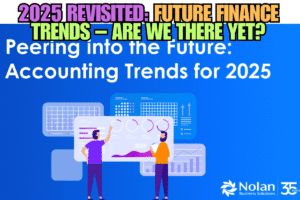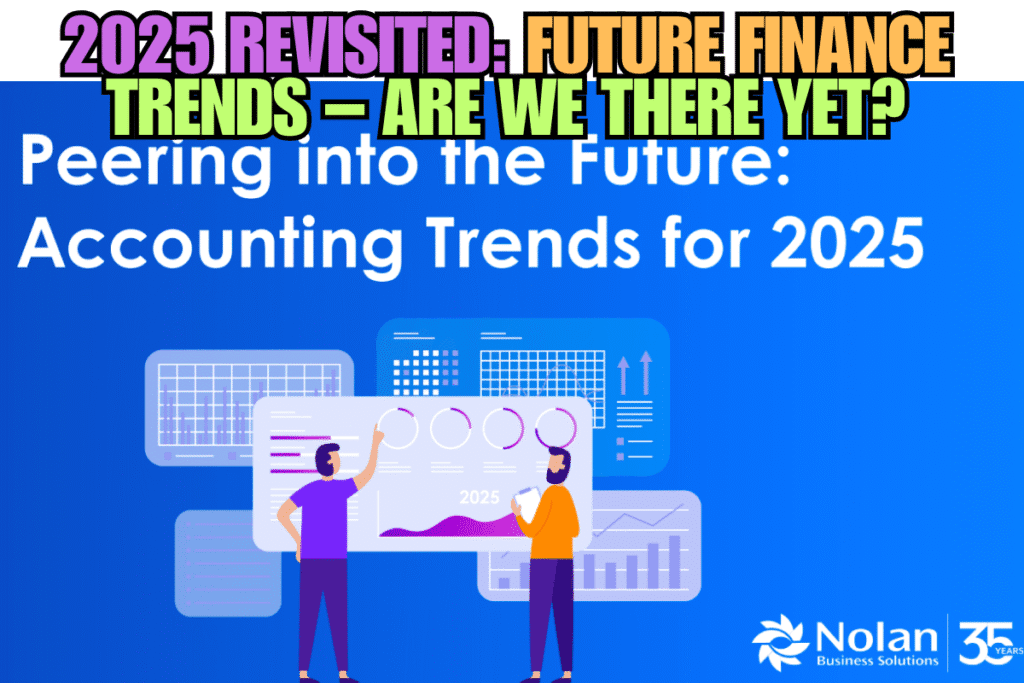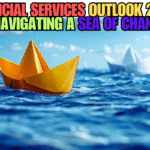Back in the early 2020s, the financial world was abuzz with predictions for 2025 Revisited: Future Finance Trends. Buzzwords like AI, blockchain, embedded finance, and open banking dominated industry reports and conference agendas. Now that we’re living in 2025 Revisited: Future Finance Trends, it’s time to take a critical look at those forecasts. Did the crystal ball gazing pan out? What has surprised us? And more importantly, what are the real defining trends shaping finance today?
Having navigated the evolving financial landscape over the past few years, witnessing the hype cycles and the actual implementation of these technologies, I can offer a grounded perspective on what the future of finance truly looks like in 2025. This isn’t just a retrospective; it’s an analysis of what has taken hold, what has faltered, and what unexpected developments have emerged to reshape the financial services sector.
The AI Ascendancy: From Promise to Practicality
The predictions were clear: Artificial Intelligence (AI) would revolutionize finance. And while we haven’t reached a point of fully autonomous financial institutions, AI’s impact in 2025 Revisited: Future Finance Trends is undeniable (How AI is transforming finance in 2025 – Spendesk).
- Hyper-Personalization is Here: AI-powered tools are now enabling financial institutions to offer truly tailored products and services based on individual customer data and behavior. From personalized investment advice to proactive fraud alerts, the customer experience is becoming increasingly bespoke.
- Fraud Detection Gets Supercharged: AI’s ability to analyze vast datasets in real-time has significantly enhanced fraud detection and prevention capabilities, protecting both institutions and consumers from increasingly sophisticated threats (How AI Is Changing Corporate Finance in 2025 – Workday Blog).
- Automation is Pervasive: AI and Robotic Process Automation (RPA) are streamlining back-office operations, automating tasks like data entry, reconciliation, and compliance checks, freeing up human capital for more strategic initiatives (The Future of AI in Financial Services | SS&C Blue Prism).
Personal Insight: What’s striking is the shift from theoretical discussions about AI to its tangible implementation. I’ve seen firsthand how AI-driven analytics platforms are providing actionable insights that were previously unattainable, empowering faster and more informed decision-making.
Embedded Finance: The Invisible Revolution
The concept of embedded finance – seamlessly integrating financial services into non-financial platforms – was another heavily touted trend. In 2025 Revisited: Future Finance Trends, this has moved beyond a niche offering to a significant market force (Top Fintech Trends 2025: The Roadmap To Smarter Financial Solutions – Avenga).
- Ubiquitous Payment Options: “Buy Now, Pay Later” (BNPL) services integrated directly into e-commerce platforms are now commonplace. Similarly, in-app payment solutions and instant financing options are becoming the norm across various industries.
- Contextual Financial Services: Imagine getting a loan offer while browsing for a car online, or receiving investment suggestions within your social media platform. Embedded finance is making financial services more accessible and contextually relevant.
Personal Insight: My own consumer behavior has been significantly influenced by embedded finance. The convenience of accessing financial tools directly within the platforms I already use has created a more frictionless and integrated experience.
The Payments Puzzle: Fragmentation and Innovation
Predictions around the future of payments in 2025 Revisited: Future Finance Trends were diverse, and the reality is a complex landscape of ongoing innovation and some fragmentation (The year ahead in financial services: 10 trends to watch in 2025 | Freshfields).
- Real-Time Payments Gain Traction: While not universally adopted, real-time payment systems are becoming increasingly prevalent, offering faster and more efficient transactions.
- Digital Wallets Dominate: Digital wallets have become a primary mode of payment for many, offering convenience and integrating various payment methods.
- The Crypto Conundrum: While the initial hype around cryptocurrencies has cooled somewhat, they remain a significant part of the financial ecosystem, with regulations slowly catching up. Central Bank Digital Currencies (CBDCs) are still in exploratory phases in many regions.
Personal Insight: The shift towards digital wallets has been significant in my daily life. The ease of contactless payments and the integration of loyalty programs within these wallets have made them a preferred payment method.
Open Banking: The Promise of Data Sharing – Partially Realized
Open banking, with its potential to revolutionize how consumers interact with their financial data, has seen progress but hasn’t fully lived up to the most optimistic predictions in 2025 Revisited: Future Finance Trends (7 Ultimate Digital Banking Trends 2025 to Elevate Financial Brands UX).
- Increased Adoption in Some Regions: The UK and parts of Europe have seen significant strides in open banking adoption, with consumers using authorized third-party apps to manage their accounts and access personalized financial services.
- Slower Progress Elsewhere: Adoption rates have been slower in other regions due to regulatory hurdles and consumer hesitancy around data sharing.
- Focus on Enhanced Security: As open banking ecosystems mature, the focus on robust security measures and consumer consent management has intensified.
Personal Insight: While I appreciate the potential of open banking for personalized financial management, I also recognize the concerns around data privacy and security that have likely contributed to its more gradual adoption in some areas.
The Unexpected Turns: Sustainability and Talent
While technology dominated the future finance predictions, two other significant trends have emerged with greater force than initially anticipated in 2025 Revisited: Future Finance Trends.
- The Rise of Sustainable Finance: Environmental, Social, and Governance (ESG) considerations have moved from a niche concern to a central pillar of financial decision-making. Investors are increasingly demanding sustainable investment options, and financial institutions are integrating ESG factors into their risk assessments and reporting (The future of sustainable finance: Key trends for 2025 and beyond – Apex Group).
- The War for Talent Intensifies: The skills required for the future of finance have evolved rapidly, creating a fierce competition for talent with expertise in data science, AI, and cybersecurity. Attracting and retaining skilled professionals has become a critical priority for financial institutions (Next in banking and capital markets 2025 – PwC).
Personal Insight: The growing emphasis on sustainable finance is a welcome development. I’ve seen a significant increase in the availability of ESG-focused investment products and a greater awareness of the financial risks associated with climate change and social inequality. The talent gap, however, is a real challenge, requiring organizations to invest in upskilling and innovative recruitment strategies.
Future in Motion
Looking back at the 2025 Revisited: Future Finance Trends, it’s clear that many of the predicted technological disruptions have indeed materialized, albeit at varying paces and with some unexpected nuances. AI is transforming operations and customer experiences, embedded finance is reshaping how we access financial services, and the payments landscape continues to evolve. While open banking’s progress has been more measured, and the crypto world remains dynamic, the unexpected surge in sustainable finance and the intensifying war for talent have added new layers of complexity and opportunity.
The future of finance in 2025 is not a static endpoint but an ongoing journey of adaptation and innovation. The trends we see today will continue to evolve, and new ones will undoubtedly emerge. The key for both individuals and organizations is to remain agile, embrace continuous learning, and navigate this dynamic landscape with a strategic and informed perspective.
What are your reflections on the 2025 Revisited: Future Finance Trends? What surprised you the most, and what do you see as the next major inflection point in the financial world? Share your thoughts in the comments below!



